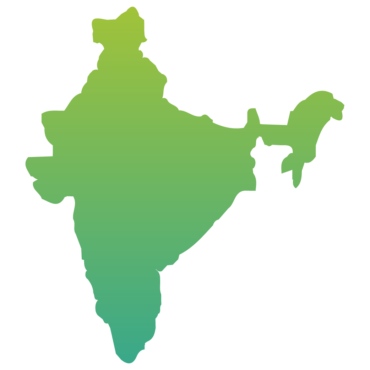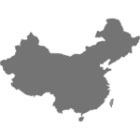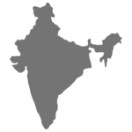
Out of pocket spending on healthcare is one of the greatest threats to the financial security of people around the world. According to the World Bank, every year 100 million people around the world are forced into extreme poverty because of healthcare costs. Despite government commitments to universal health coverage, the burden of rising costs of care disproportionately fall on the poor.

WHAT IS
FINTECH FOR?
Fintech for Health is an initiative of ACCESS Health International focused on helping people pay for and access the care they need, when they need it, while avoiding financial hardship. Together with our partners, we conduct research and promote dialogue on the specific challenges people face in paying for and accessing high quality care. We facilitate partnerships and co-creation opportunities between government, the finance industry, and healthcare organizations in each market.
Our approach is based on empowering low and moderate income people with a range—a choice– of financial servicestailored to their healthcare and financial needs. We believe that the best way to provide patient centered, innovative health financing is by adopting a financial inclusion approach—targeting the unbanked and underbanked using digital financial services and community-based delivery of financial and healthcare services.
Problem Statements

Malaysia
Diabetes
- The public health problem: The current rate of diabetes in Malaysian adults aged 20-79 is 17%, the highest incidence rate in Asia and one of the highest in the world.
- Why does this problem need to be addressed? The long-term nature of and possibility for repeated complications places a heavy economic burden on low- and moderate-income households. Those without public health insurance or who have difficulty accessing public healthcare services could pay anywhere from $115-230 USD per month on diabetes medications and supplies.
- Doesn’t the government cover these expenses? The Malaysian government recognizes diabetes as a major public health issue and has expanded and adapted programs to try to meet this need. However, gaps in the national insurance schemes and extended wati times at public hospitals and clinics create long periods of time between re-supply of medications and diabetes management appointments which increases the frequency of diabetic complications, placing even more financial strain on households. Lower wait times and higher quality care is mostly found in private hospital, which are unreachable to those who cannot pay for private health insurance
- How does fintech fit in? Malaysians accessing diabetic healthcare services would benefit from a financing solution that allows them to access continuous, high-quality diabetes care and a steady supply of their medications and supplies
Documented Migrant Workers in Malaysia
- The public health problem: Malaysia is the home to 2.2 million documented migrant workers and up to 4 million undocumented migrants. While Malaysian citizens have access to government healthcare programs, many of these services are not available to migrant workers.
- Why does this problem need to be addressed? Currently, migrant workers and their employers have to purchase Foreign Workers Hospitalization and Surgical Insurance Scheme (SPIKPA) by paying RM 120 per year of annual premium which gives them access to limited inpatient hospital admission, surgeries and intensive care unit treatments up to RM20,000 per year5. However, this does not include coverage for outpatient or preventive care and requires a high upfront payment/deposit to even be admitted to private hospitals. The amount of deposit at private hospitals varies depending on the rules set by each private hospital. This deposit acts as a major barrier to accessing healthcare in Malaysia among migrant workers, even with their subscriptions to SPIKPA. Additionally, due to the limited coverage of SPIKPA, migrant workers usually opt for public hospitals with their lower fees and longer wait time, and migrants often see this as the best settings to receive health care as they might not be able to afford outpatient care in private clinics. This prevents them from seeing doctors and receiving preventive, acute and curative care. Addressing this problem is crucial to improve the health outcomes of these migrant workers. Additionally, due to the healthcare sector in Malaysia is heading to be cashless by the end of 2021, migrant workers might have difficulties in making payments in the coming years. Given that documented and undocumented migrants have challenges opening bank accounts either because of language, documentation or location barriers. Having access to e-payments will open their access to receiving continuous healthcare and healthcare using their mobile and internet services.
- Doesn’t the government cover these expenses? Despite the government of Malaysia passing a compulsory health insurance mandate for these migrant workers in the form of Foreign Workers Hospitalization and Surgical Insurance Scheme (SPIKPA), these migrant workers often face barriers accessing healthcare primarily due to financial constraints as the affordability of outpatient care is cited by migrant workers as their major barriers in seeking healthcare.
- How does fintech fit in? Currently, migrant workers will purchase physical cards at kiosks so that they could access the telemedicine services. Fintech companies with their digital payment app and remittance app could exclude these third-party kiosks from the payment ecosystem and reduce the healthcare costs for these migrant workers as migrant workers could now pay for telemedicine using fintech services such as by using e-wallets. They could also receive healthcare as a perk for using a remittance app. This partnership will widen the reach of telemedicine to banked and unbanked migrant workers in Malaysia. Migrant workers would be able to see doctors even during their workdays and without leaving their homes. They could explain their symptoms in their own native languages. Hence, this partnership expands and improves the quality of healthcare for migrant workers in Malaysia.

Nepal
Lack of Formal Financing Options for Healthcare
- The public health problem: Only 61% of the country’s entire population have access to a formal bank account. Lack of or poor access to financing options create multiple barriers for people seeking essential healthcare services.
- Why does this problem need to be addressed? There is a severe lack of trust in and awareness of formal banking services in Nepal. There is a high mobile penetration rate but low literacy and education levels and multiple data breeches have led to mistrust in digital platforms. In addition to this, Nepal has historically dealt with access and affordability issues due to the rough geographical landscape. Mountainous regions lack tertiary health facilities and the transportation infrastructure to allow for easy access to high-quality services
- How does fintech fit in? Aside from the great need to educate the public on secure fintech options for paying for healthcare services, the high mobile penetration rate allows for the opportunity for simple financing options to address healthcare payment needs.

Bangladesh
MNH and Reproductive Healthcare Services
- The public health problem: Women in Bangladesh have difficulty accessing and paying for affordable, high-quality maternal and newborn health (MNH) and reproductive healthcare services. In fact, 87% of women in Bangladesh see unqualified village doctors for MNH care and that only 18% are going to higher-quality government or private clinics for their maternity care
- Why does this problem need to be addressed? Even though facilities that offer high-quality MNH care exist, women often have great difficulty accessing and paying for their services. This gap in access results in only 31.2% of women aged 15-49 being attended by any provider at least four times during their pregnancy.
- Doesn’t the government cover these expenses? The cost and quality of MNH care in Bangladesh varies widely depending on region and type of health facility. Though care is provided for free in public facilities, there is still a 63% rate of out-of-pocket expenses for healthcare, a burden that is unequally concentrated among the poor and middle-income populations.
- How does fintech fit in? Women in Bangladesh need a payments solution to help them access and pay for higher quality MNH services and the associated costs such as transportation and childcare.
Respiratory Infections
- The public health problem: Respiratory infections such as pneumonia, asthma, and influenza are among the top causes of death in Bangladesh, accounting for over 1.2 million deaths per year and placing lower respiratory infections as the second leading cause of death in Bangladesh.
- Why does this problem need to be addressed? Severe lack of education and awareness about symptoms and treatment, in addition to worsening air quality, greatly contribute to the high rate of death due to respiratory diseases. In addition to this, the most vulnerable populations experience the added burden of transportation and childcare-related expenses which can easily throw them into extreme poverty.
- Doesn’t the government cover these expenses? Recently, the government of Bangladesh has placed more focus on strengthening primary and secondary healthcare services that are available in both rural and urban areas. Despite this, only 42% of the population actually seeks care for respiratory conditions producing a respiratory-related mortality burden of 21%
- How does fintech fit in? Low- and middle-income groups, including under-five population, require a financing solution that allows them the freedom to seek high-quality care for respiratory conditions early on in the disease progression

Vietnam
Non-Communicable Diseases (NCDs)
- The public health problem: Vietnam’s move from a low- to lower-middle-income economy is accompanied by an epidemiological shift to a society more burdened with NCDs such as diabetes, heart and lung disease, and cancer. NCDs account for 77% of all deaths in Vietnam with cardiovascular disease accounting for 31% of the total.
- Why does this problem need to be addressed? Due to the chronic nature of NCDs and the need for long-term treatment, NCDs have a big impact on the economic burden of a household. The financial impact of chronic NCDs on households with at least on member with a chronic disease were 14.6 and 7.6%, compared to those whose members were free from chronic disease (4.2 and 2.3%). Approximately 70% of patients in Vietnam face the risk of destitution due to these healthcare costs. Series’ of smaller health events related to chronic disease complications present the biggest economic burden.
- Doesn’t the government cover these expenses? NCDs are a health priority for the Vietnamese Ministry of Health but major gaps still exist in regular access to continuous, high-quality care related to NCDs. Currently, only 29% of high-risk persons in Vietnam are receiving any drug therapy to prevent heart attacks and strokes, less than 25% of the primary care clinics in Vietnam offer cardiovascular disease risk stratification, and less than 50% of them have cardiovascular disease guidelines.
- How does fintech fit in? Low- and moderate-income populations in Vietnam require a financial solution to help them pay for the cost of NCD treatment over the course of their lives from health facilities that offer high-quality, continuous diabetes services
Reproductive Healthcare Services and Contraception
- The public health problem: Over 1 million women working in industrial zones in Vietnam have difficulty accessing and paying the upfront costs of reliable, high-quality, long-term contraception. This problem contributes to the high rate of unwanted pregnancies and abortions (over 350,000 abortions every year).
- Why does this problem need to be addressed? Currently, if women cannot access injectable or implantable contraception (the most reliable forms of birth control), they turn to unreliable classic methods such as morning-after pills, condoms, and cycle calculation. Injectable contraception costs $17 USD every three months and at most, low- or moderate-income women can afford to pay $1-3 USD at one time for any contraception.
- Doesn’t the government cover these expenses? Due to its move from a low to middle-income country, the Vietnamese government is experiencing a budget shortfall for women’s reproductive services. There are government subsidies available, however many women are not eligible or experience breaches in their privacy when trying to obtain waivers.
- How does fintech fit in? Low- and moderate-income women working in industrial zones in Vietnam require a financing option to help them pay the upfront costs – or spread the payments over the duration of their use – for high-quality contraception and reproductive care services.

China
Access to High-Quality Healthcare Services for Rural Chinese
- The public health problem: Rural low- and moderate-income populations face high out-of-pocket (OOP) expenses and difficulty accessing high-quality medical services. In 2016, over 7 million poor people in China returned to poverty due to the costs related to illness and injury.
- Why does this problem need to be addressed? Low-income groups are most affected by high OOP payments because a larger portion of their income is spent on health expenses. Overall, OOP payments accounted for 35% of total medical expenditure in China in 2015.
- Doesn’t the government cover these expenses? China has all but achieved universal health coverage and has made available multiple innovative insurance schemes. However, gaps still exist in coverage for rural populations whose health is generally worse than that of middle- and upper-income populations. In addition, they experience more barriers to accessing and paying for their care and higher costs associated with seeking this care.
- How does fintech fit in? Low-income rural populations would benefit from a financing solution that provides them with equal opportunity to access high-quality medical services that does not overburden them with high OOP payments
Critical Diseases
- The public health problem: Malignant tumors account for 23.9% of all deaths in China. The country experienced a 3.9% annual increase of malignant tumors in the past decade while the mortality rate for these diseases continues at a steady annual increase of 2.5%
- Why does this problem need to be addressed? This problem is exacerbated in third-tier cities and rural areas where residents experience lower incidence rates but higher mortality rates due to poor access to timely medications, innovative drug treatments, and unevenly distributed healthcare resources.
- Doesn’t the government cover these expenses? The Chinese government has responded to the rapid rise of cancer incidence through increasing the number of both outpatient and inpatient oncology healthcare institutions. However, there are still high OOP payments associated with cancer treatment and management. For example, the average medical cost for a patient with non-small cell lung cancer over a three-month period is around $16,955 USD. Even if rural residents can be reimbursed by medical insurance, this is far more than most low- and moderate-income Chinese families can afford.
- How does fintech fit in? Rural, low-income residents in China would benefit from a financing solution to help them pay for high quality, long-term, timely, innovative cancer treatment

India
MNH Care Services in Chhattisgarh
- The public health problem: Women in the Indian state of Chhattisgarh are faced with high OOP payments during and after their pregnancies. The average OOP payments in this state in 2017-2018 per pregnancy was $61 USD.
- Why does this problem need to be addressed? When the low-income residents of Chhattisgarh are hit with catastrophic payments such as those associated with poor pregnancy outcomes, c-sections, or general inpatient costs of childbirth, they are thrown in economic turmoil. The OOP payment for childbirth can be anywhere from $23 USD in public facilities to $158 USD in charity-run hospitals to $277 USD in private hospitals. Overall, residents of urban and rural Chhattisgarh have only a total of $100 USD of household savings per month.
- Doesn’t the government cover these expenses? The Chhattisgarh government considers MNH to be a priority and are considered an “aspirational district,” ready to implement programs to improve the quality and accessibility of MNH services in the state. However, severe problems remain in many state facilities such as lack of specialized physicians, poor quality services, non-availability of specific services, patients’ lack of trust in doctors, and long wait times.
- How does fintech fit in? The residents of Chhattisgarh would benefit from a financing solution that allows them to utilize high-quality MNH care
Cancer
- The public health problem: The incidence of cancer cases in India has more than doubled from 1990 to 2016. 8.3% of total deaths and 5% of the total disability-adjusted life years in India are due to cancer.
- Why does this problem need to be addressed? OOP payments for cancer treatment and manage is very high. In Tamil Nadu, the OOP expenditure for cancer in a public health facility was $111 USD, much more than low- and moderate-income populations are able to afford. In addition, non-medical expenditure associated with cancer care poses a significant threat to the poor in many states, with health insurance schemes unable to cover these associated costs.
- Doesn’t the government cover these expenses? It is the goal of the Indian government to reduce premature mortality from cancer by 25% by 2025. They have boosted their screening capacities for oral, breast, lung, and cervical cancer and have focused on reducing the rate of comorbidities such as diabetes, hypertension, and tobacco use. However, major gaps in coverage exist in many states in India and the quality of cancer services has been consistently low in public institutions.
- How does fintech fit in? Low- and moderate-income populations would benefit from a financing solution that helps them pay for cancer services at facilities that offer high-quality care as well as the associated non-medical costs of receiving treatment over the course of their illness.














